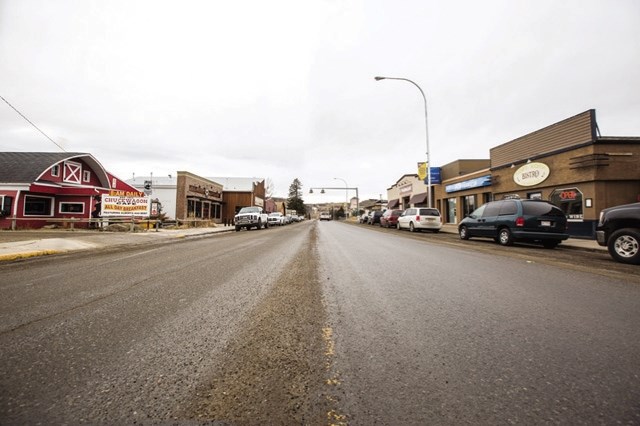Amalgamation might be the most economical solution for future growth in Black Diamond and Turner Valley, according to a new growth strategy considered for both communities.
Five growth scenarios were presented to Black Diamond and Turner Valley councils this month. They looked at growth over the next 60 years and councillors from both communities favoured an option that would see the two towns become one. The project cost $125,000, which was shared equally between the two Towns.
The Towns explored amalgamation twice previously, in 1997 and 2007, but the idea was defeated in plebiscites both times due to concerns about cost, lack of information, loss of town identities and Turner Valley’s ongoing struggles with its century-old gas history.
“The whole reason behind this Joint Advisory Committee was to look at how we were going to weave things together,” said Turner Valley Deputy Mayor Barry Crane. “If the end result is amalgamation, I think we need to be looking at the logical steps to get us there. This is the future and we need to start thinking really serious about it.”
Two additional scenarios looked at growing the towns together, two more explored growing them apart.
The Joint Advisory Committee, which looked at the scenarios, was made up of the mayors and some councillors from both towns.
The preferred scenario, option three of the Joint Growth Strategy, proposes 348.4 additional acres of land for urban development over the next six decades. It envisions 257.5 acres for residential growth and 6.4 acres for commercial development in Turner Valley. Black Diamond would see 64.4 acres for residential, 11.6 acres for commercial and 8.5 for industrial development.
Andrew Palmiere, principal of 02 Planning and Design, worked with the committee to develop the strategy. He said the third scenario proposes development to the east and south of Black Diamond and to the east and northwest of Turner Valley.
“The bulk of residential development is concentrated in the area between the towns with commercial growth along Highway 22 to make use of existing infrastructure and accessibility and industrial development along Highway 7,” he said.
The document shows growth could be as high as 12,785 people in Turner Valley and 13,121 citizens in Black Diamond by 2075.
It estimates the towns will collectively need an additional 545 to 903 acres of land for residential growth, 30 to 51 acres for commercial growth and an additional 22.7 acres for industrial growth.
The strategy also shows that according to the Calgary Metropolitan Plan, forecasts estimate growth in the Calgary region will average 1.4 per cent per year from 2015 to 2045 and .8 per cent annually from 2045 to 2075.
“We based it on a more aggressive growth scenario,” Palmiere said. “Municipalities around Calgary were growing quicker than you would expect looking at historical data.”
Palmiere said infrastructure and servicing costs are estimated to reach $214.9 million. This doesn’t include the northernmost quarter section east of Black Diamond, as updated estimates weren’t available before publishing the document.
Potable water costs are expected to exceed $61.4 million and will include the addition of a water reservoir and pump stations, potable distribution mains and tie-ins, treatment plant and outfall upgrades and sanitary truck mains and tie ins.
Transportation costs are estimated to total $22.8 million to widen four stretches of Highway 7 and 22, improve 15 intersections and add another 8.2 km of road.
Palmiere said although scenario three has the highest infrastructure costs, the overall price tag is the lowest per acre at $187,980 over 60 years.
A community engagement workshop in 2015 gathered input from about 70 residents on where they saw the future of the two communities.
“There was a real tone that started to come out of growing together,” Palmiere said. “It came resounding the idea of growing together.”
Palmiere said the scope of the study looked at land use, transportation and engineering.
“We didn’t look at things like libraries or fire or the services that would support this,” he said. “We looked at where is the best place to grow. It has to be an efficient logical process, attempting to meet the CRP density targets.”
Rod Ross, Black Diamond planning manager, said the Joint Growth Strategy identifies where it makes the most sense to accommodate additional growth for the two municipalities.
“The towns agreed to look at growth without distinguishing between Black Diamond and Turner Valley, looking at the long term needs of the broader community as a whole and determining where it’s most effective and efficient land use pattern and infrastructure serving scenario would be for the towns as a single entity,” he said.
With the Joint Growth Strategy complete, the next step is for both Towns to explore amalgamation before coordinating with the MD of Foothills to revise the towns’ Intermunicipal Development plans based and continue annexing land, said Palmiere.
Following that, he said, additional infrastructure studies must be completed and area structure plans developed to provide more detailed concepts for growth and guidelines for land development.




